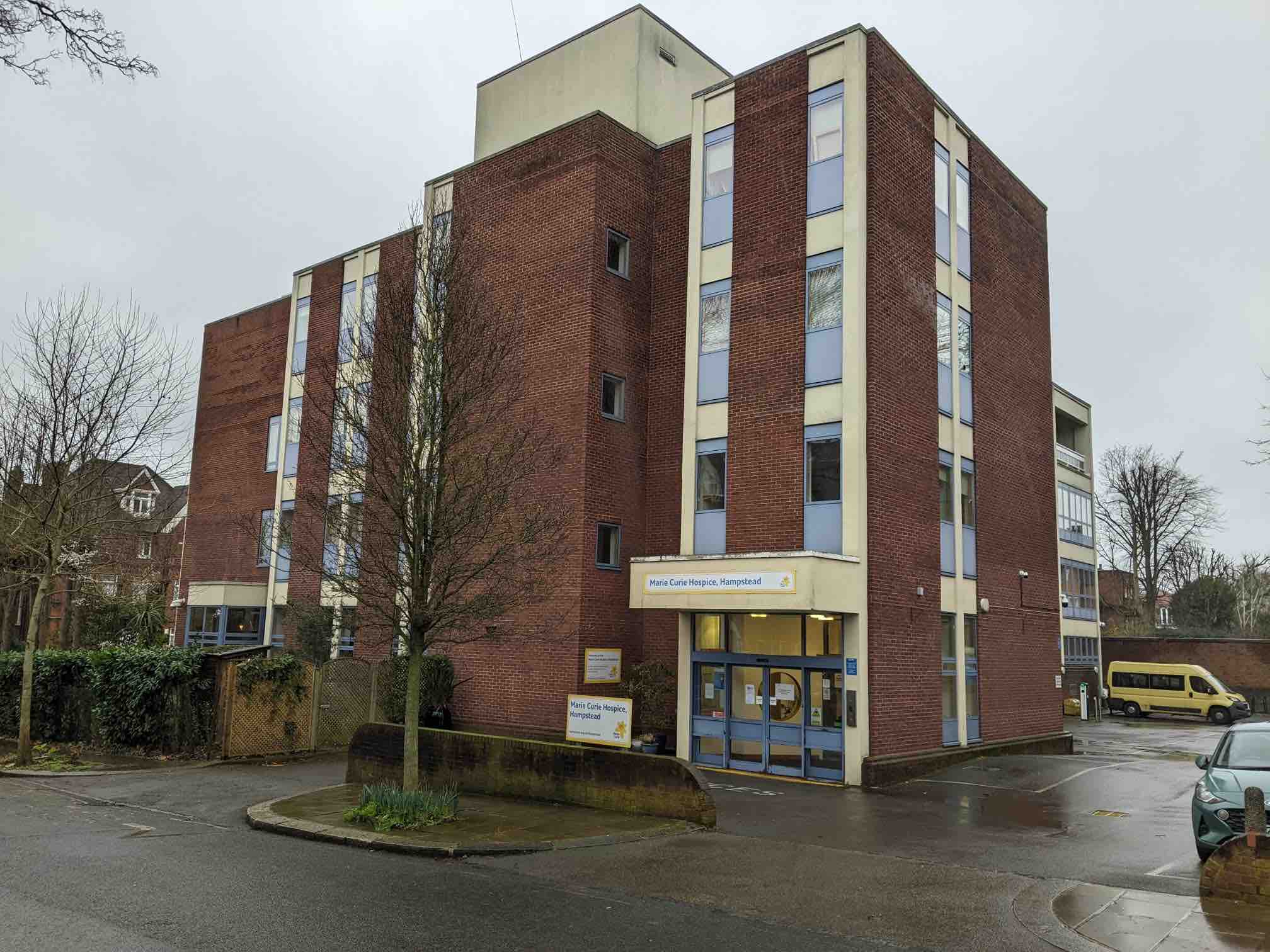Concrete risk forces Marie Curie Hospice in Hampstead to close
RAAC crisis sees charity seek alternatives
Thursday, 15th February — By Tom Foot

The hospice in Lyndhurst Gardens
THE Marie Curie Hampstead Hospice has been shut down after dangerous concrete was found in the 1970s building.
Terminally ill people are no longer being referred to the 34-room hospice in Lyndhurst Gardens, following the discovery of Reinforced Autoclaved Aerated Concrete (RAAC) – a substandard material experts say could collapse at any moment.
Marie Curie chief Andrew Wilson-Mouasher told the New Journal the charity cannot move back into the building for 18 months.
The board of trustees is due to meet to map out a plan for leaving its historic base with specialist hospice services provided “remotely” in the home in the future. All nurses and healthcare assistants are being moved “into the community”, to work alongside the NHS, but non-clinical and management posts at the hospice are facing redundancy.
The organisation has been providing services to terminally-ill patients for almost 100 years in Hampstead and its most recent building was opened by the late Queen Mother in 1978.
“Everyone is fuming,” a former employee told the New Journal. “The nurses have moved into the community care settings. But the older ones, it is not so easy for them for them to do that. There are also redundancies. “What is going to happen to the building? There is a lovely chapel there. A book with all the names in it of the people who died. What’s going to happen to that?” The charity said commemorative trees and gardens would be maintained out of respect for those who go back to the building to remember loved ones.
Josie Reilly, who has visited relatives at the hospice, said: “It seems a shame as l have visited lots of people there and the care was outstanding. I felt it was a big loss to the staff and palliative care.”
Sense and Sensibility actor Greg Wise is among thousands of people to fund raise for the charity over the years, telling the New Journal in 2018 how the hospice had supported him and his sister Clare during her cancer treatment.
RAAC is a lightweight material which was used mostly in flat roofing, but also in floors and walls, between the 1950s and 1990s. It is a cheaper alternative to standard concrete and is quicker to produce and easier to install. Experts say a wide range of public buildings have been constructed using the material and could now be at risk of collapse. It can be hugely expensive to repair, and demolition is the most likely solution to the problem.
Mr Wilson-Mouasher, Marie Curie Chief Place and Service Delivery Officer, praised his team of volunteers and staff for “their willingness to adapt”, adding: “The charity has been advised that, due to the discovery of RAAC (reinforced autoclaved aerated concrete) and other unexpected building issues, we are unable to use the Hampstead Hospice building for at least 12-18 months.
“We are also exploring the provision of specialist hospice care at home that will also enable our team to provide holistic, specialist care to more people in the local community, and we are looking at how we can support people at the end of life who are admitted to hospital.
“Regrettably, due to the situation with the Hampstead hospice building and the ensuing changes to how we will deliver care, we have launched a consultation with non-clinical and some senior management staff. We know this will be an uncertain time and we are supporting them through the process. There will be opportunities for alternative roles and redeployment.
“Due to the lengthy timescales and likely costs, any decisions on the hospice building will need to be made by the Marie Curie Board of Trustees in the coming months, as per standard charity governance and regulation.
“At Marie Curie, we are committed to delivering the best possible palliative and end of life care now and in the future. We are working with NHS commissioners and local partners, and we remain committed to closing the gap in end of life care that exists in London.”
